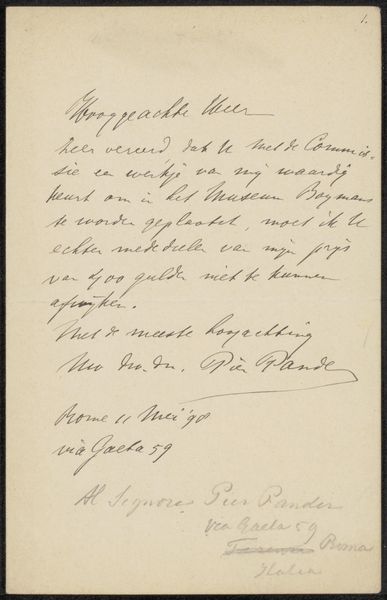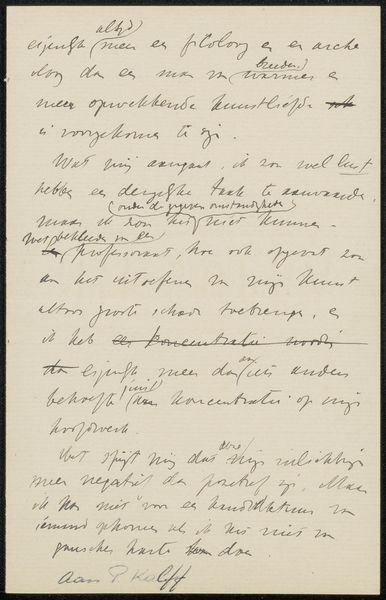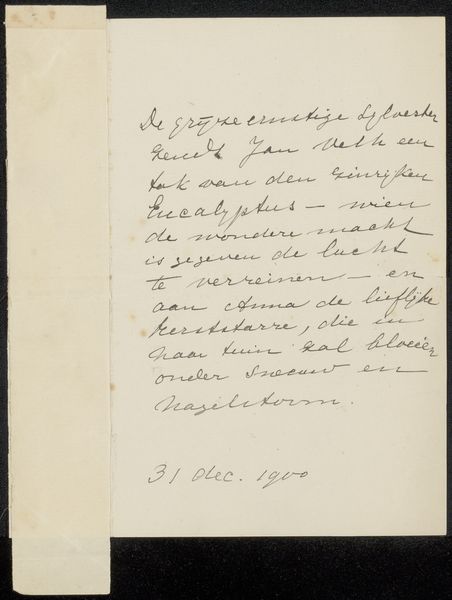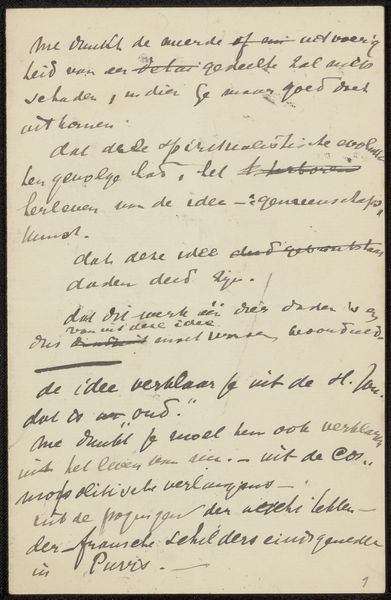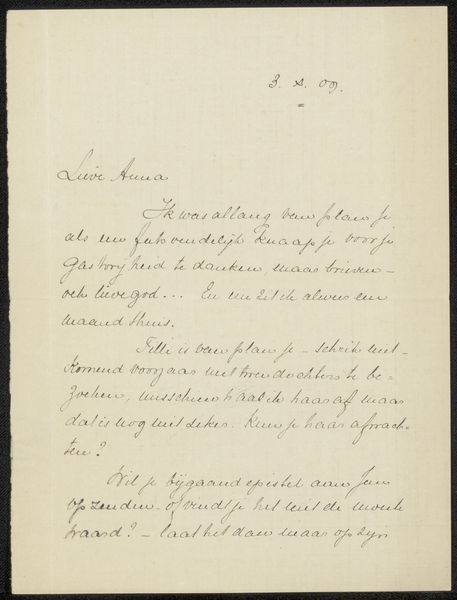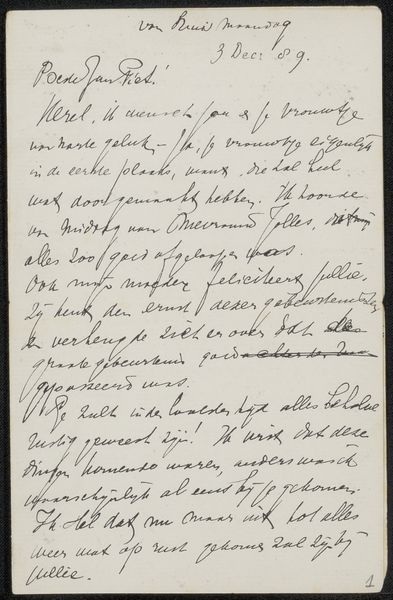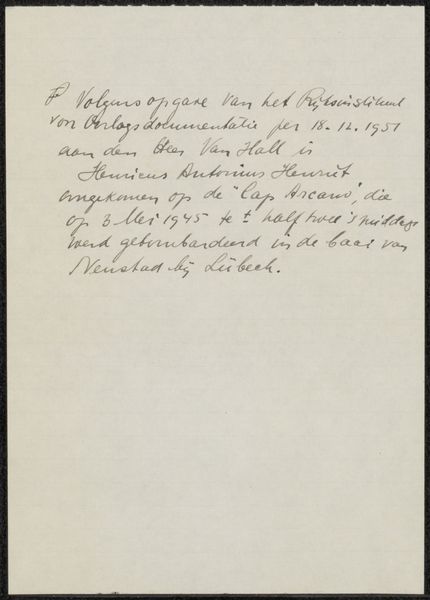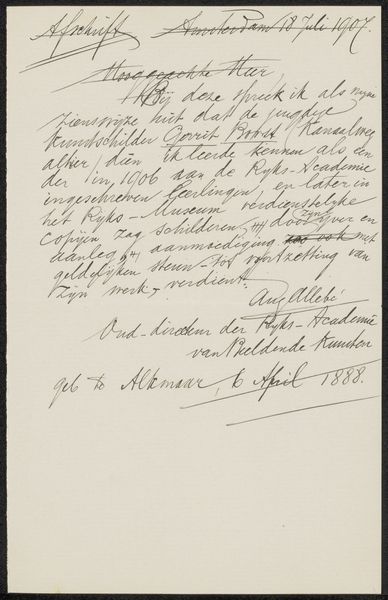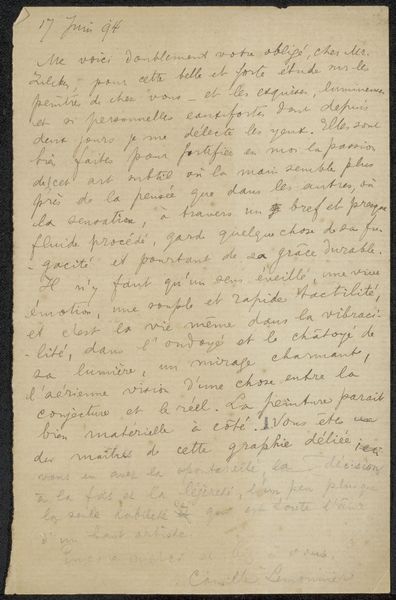
drawing, paper, ink, pen
#
drawing
#
script typography
#
hand-lettering
#
ink paper printed
#
old engraving style
#
hand drawn type
#
hand lettering
#
paper
#
ink
#
hand-drawn typeface
#
ink drawing experimentation
#
intimism
#
pen-ink sketch
#
pen work
#
pen
Copyright: Rijks Museum: Open Domain
Curator: This delicate ink drawing is titled "Brief aan Jan Veth," believed to have been created sometime between 1903 and 1926. Editor: Immediately, I'm drawn to the elegance of the script and the intimate feel. The careful lines and graceful forms seem to almost dance across the paper. It's like glimpsing a private conversation frozen in time. Curator: Exactly! This letter gives us a glimpse into the social fabric of the early 20th-century Dutch art scene. The creation itself– the choice of pen, ink, and paper - all point towards a personal, handcrafted approach in communication, contrasting with mass-produced correspondence of later times. Editor: The very materiality of the letter supports your idea, right? The weight of the paper, the type of ink used... all point to a tangible sense of connection to its origins. Note how the pressure applied shapes the form, which determines thickness and rhythm... it all points toward an intense artistic intention, to make something by hand that also communicates meaning! Curator: Yes, consider too the labor involved. Every word carefully crafted demonstrates respect for Jan Veth and the value placed on personal communication at that moment. The very act of handwriting speaks volumes, it's also crucial to remember that sending and receiving such a letter was an elaborate dance involving postal networks and specific socio-economic conditions to maintain contact. Editor: You know, looking again, the composition—the deliberate spacing between the lines, the way certain words are emphasized through flourishes –it reveals how language can become its own expressive artform. A simple piece of communication between individuals gains symbolic significance when we recognize it within a structuralist interpretation of letters of communication. Curator: Absolutely! We're reminded that even seemingly mundane exchanges carry profound social weight. This "Brief aan Jan Veth" then serves as evidence of cultural exchanges and labor divisions within creative environments. Editor: It does leave me wondering who the author and Jan Veth really were as I begin thinking about ways that handwriting can transform and reshape identity, and about ways social exchange may be the final frontier to approach letters formally! Curator: And hopefully that leads us to think deeper about the importance of our own exchanges.
Comments
No comments
Be the first to comment and join the conversation on the ultimate creative platform.
